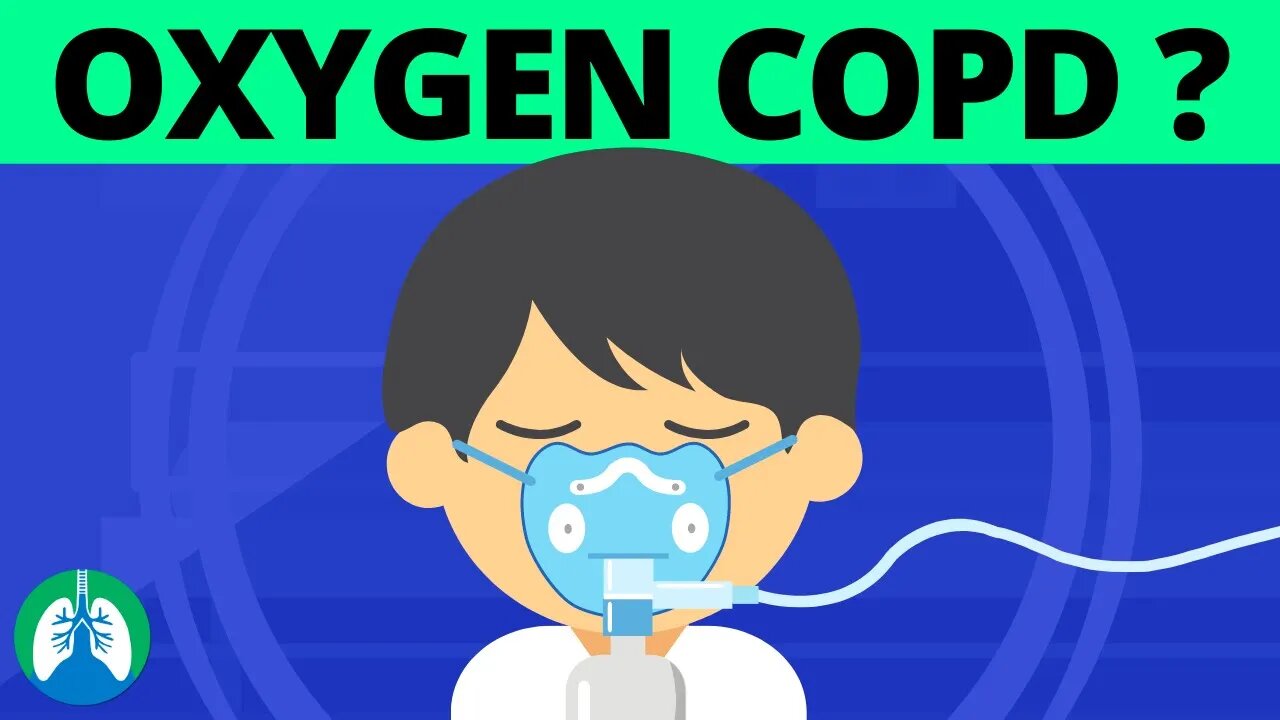Premium Only Content

How Much Oxygen to Give a Patient with COPD? (TMC Practice Question)
This video breaks down a TMC Practice Question about providing oxygen therapy to a patient with COPD. What should you be aware of in this case?
💥TMC Test Bank (All Practice Questions) 👉 http://bit.ly/2IGeqSu
💥Daily TMC Practice Questions (via Email) 👉 http://bit.ly/2NnXh3C
➡️A 61-year-old male patient with emphysema is receiving oxygen via air-entrainment mask at 45%. One hour after oxygen therapy was initiated, the patient appears lethargic and obtunded. Which of the following is the most likely cause in the change of the patient’s status?
A. Hypotension
B. Refractory hypoxemia
C. Respiratory muscle fatigue
D. Oxygen-induced hypoventilation
Do you know the answer? Let's break it down.
First and foremost, you needed to recognize that emphysema in an obstructive disease that is classified as a type of COPD. Patients with COPD are typically chronic CO2 retainers which means that their ABG results would show: Compensated (Chronic) Respiratory Acidosis.
These patients are prone to oxygen-induced hypoventilation which means that receiving high levels of oxygen can affect their ventilation-to-perfusion balance in the lungs. It ultimately causes an increase in deadspace ventilation and, thus, an increase in the PaCO2 level. So for COPD patients, it is recommend to provide an FiO2 that is low enough to keep their PaO2 in the 50-60 torr range. This is equivalent to an SpO2 85-90%.
With that said, this is where a lot of confusion comes into play for many students when covering this topic. Because sometimes they are scared to give any oxygen to the patient, just because they have COPD. That's the big misconception. Yes, you should be careful and be mindful of their condition. But always remember: You should NEVER deprive oxygen from a patient in need just because they are a CO2 retainer. Hypoxemia is still hypoxemia, no matter if the patient has COPD or not. So as a Respiratory Therapist, you still need to treat these patients by providing adequate amounts of oxygen.
💥TMC Test Bank (All Practice Questions) 👉 http://bit.ly/2IGeqSu
💥Daily TMC Practice Questions (via Email) 👉 http://bit.ly/2NnXh3C
—————
📗 BEST STUDY GUIDES FOR YOU
▪ TMC Test Bank 👉 http://bit.ly/2IGeqSu
▪ Hacking the TMC Exam 👉 http://bit.ly/2XBc8do
▪ TMC Exam Bundle (Save $) 👉 https://bit.ly/34pqEsV
▪ Daily TMC Practice Questions 👉 http://bit.ly/2NnXh3C
💙MORE FROM RTZ
▪ Free TMC Practice Exam 👉 http://bit.ly/2XlwASL
▪ Free RRT Cheat Sheet 👉 http://bit.ly/2IbmOKB
▪ Resources for RT's 👉 http://bit.ly/2WVV5qo
▪ Testimonials 👉 http://bit.ly/2x7b5Gl
🌐FOLLOW US
▪ Instagram 👉 http://bit.ly/2FhF0jV
▪ Twitter 👉 http://bit.ly/2ZsS6T1
▪ Facebook 👉 http://bit.ly/2MSEejt
▪ Pinterest 👉 http://bit.ly/2ZwVLPw
🚑MEDICAL DISCLAIMER
Medicine and Respiratory Therapy are continuously changing practices. The information in this video is for educational and entertainment purposes only. For medical advice, please consult with a physician or qualified medical professional.
💡AFFILIATE DISCLAIMER
This description contains affiliate links. If you decide to purchase a product through one of them, we receive a small commission at no cost to you.
—————
⏰TIMESTAMPS
0:00 - Intro
0:30 - Practice Question
1:07 - Explanation
3:08 - Correct Answer
—————
🖼CREDIT FOR MUSIC AND GRAPHICS:
▪ Graphics: www.canva.com
▪ Graphics: www.freevector.com
▪ Graphics: www.vecteezy.com
▪ Graphics: www.pngtree.com
#RespiratoryTherapy #RespiratoryTherapist #RespiratoryTherapySchool
-
 3:17
3:17
Respiratory Therapy Zone
1 year agoWhat is Silicosis? (EXPLAINED) 🫁
500 -
 20:03
20:03
ThinkStory
6 hours agoGEN V Season 2 Episode 6 Breakdown! Cipher's Power, Stan's Plan & Polarity Explained!
34 -
 LIVE
LIVE
The Robert Scott Bell Show
6 hours agoTom Renz, Medical Kidnapping, Trust in Doctors Declines, Allergy-Suicide Link, Rockefeller’s Food Agenda - The RSB Show 10-8-25
169 watching -
 LIVE
LIVE
Pop Culture Crisis
2 hours agoTHE WITCHER Recasting Plot EXPOSED, TRON: Ares Premiere DISASTER, Harry Potter Leaks | Ep. 931
320 watching -
 LIVE
LIVE
Film Threat
20 hours agoTRON: ARES EARLY REVIEW + AMAZON'S NEW VISION FOR BOND | Hollywood on the Rocks
75 watching -
 LIVE
LIVE
The HotSeat
1 hour agoArson NOT Climate Change Is Burning Caly!
621 watching -
 LIVE
LIVE
Owen Shroyer
2 hours agoOwen Report - 10-08-2025 - Is MAGA Even MAGA Anymore?
1,368 watching -
 1:29:40
1:29:40
The Quartering
2 hours agoAnother Lefty Terror Attack, Charlie Kirk Bombshell, Leftists Have Left X & More
104K40 -
 1:58:38
1:58:38
Steven Crowder
7 hours agoPillaging America: Lefty Celebs Prove Exactly Why Every Illegal Must Get Out
419K315 -
 1:02:01
1:02:01
DeVory Darkins
4 hours ago $28.83 earnedComey appears in court as California Democrat EMBARRASSES herself in brutal interview
90.6K70
